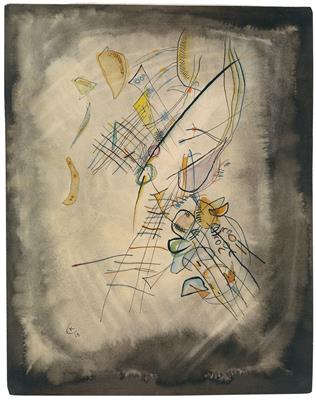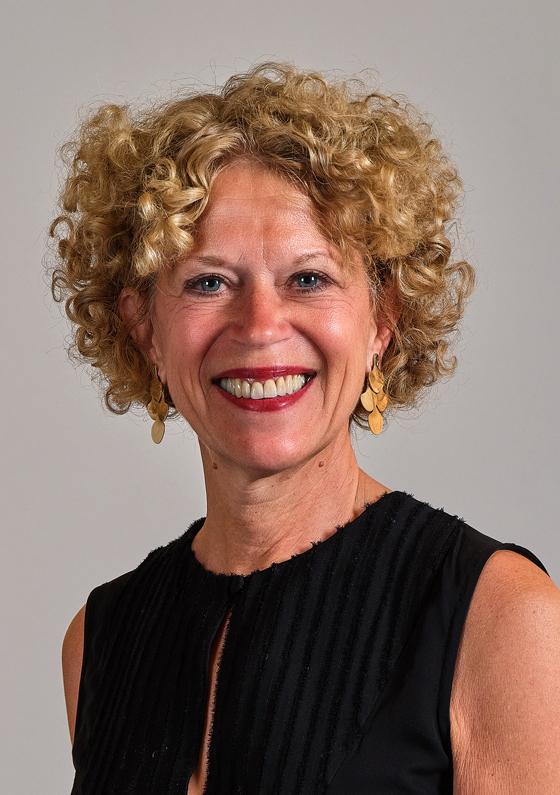Wassily Kandinsky *

(Moscow 1866–1944 Neuilly-sur-Seine)
Untitled, monogrammed, dated K (in a semi-circle) 18, watercolour and ink on brownish paper, 28.4 x 22.5 cm, framed, (PS)
Provenance:
Galerie Rusche, Cologne
Private Collection, Rhineland
Literature:
Vivian Endicott Barnett, Kandinsky-Werkverzeichnis der Aquarelle, Band I,1900–1921, Munich 1992, cat. raisonné no. 506
In the years following the October Revolution of 1917, which Wassily Kandinsky experienced in Moscow, he was appointed to numerous posts in the arts and cultural politics. He was nominated as a member of staff of the Department of Fine Arts at the Commissariat for Cultural Education, and from autumn 1918 he took on a professorship at SVOMAS, the Free State Art Workshops in Moscow. The various posts and his teaching duties demanded so much of his attention, that in 1918 he did not manage to paint any oil paintings at all and only a very few illustrative watercolours. This present work, ‘Untitled’, 1918, exemplifies some of the theoretical analyses he produced to accompany his essay, Point and Line to Plane. During his Moscow years, two tendencies are visible in the artist’s oeuvre. On the one hand, there is an increasing use of geometry, and, on the other, there is the inclusion of a frame, employed as a pictorial, compositional element. The internal geometric, visual motif is entirely set free from the external delimitation of the pictorial space. The positioning of above and below, and, indeed, the law of gravity, appear to have been abrogated, in order to allow a new kind of spatial perception. The light colour field hovers above the dark pictorial ground, and thus a sense of turning is suggested by the directional values within the image. As before, Kandinsky bases his work on objective motifs, which he transforms into increasingly angular, stark forms in his works. The wedge-shaped triangles and the truncated arcs and circles emphasise the gyrating and diagonal movements that frequently occur in the artist’s works. The years 1918 and 1919 represented an important turning point for Kandinsky, not just politically, but also artistically. Building on the watercolours he produced in 1918, the work, ‘In the Grey’ of 1919 allowed him, in his own words, “to detach himself from his dramatic period, that is, from the very dense accumulation of so many forms.” (Letter from Kandinsky to Hilla von Rebay, July 1934).
Specialist: Dr. Petra Maria Schäpers
 Dr. Petra Maria Schäpers
Dr. Petra Maria Schäpers
+49 211 2107747
petra.schaepers@dorotheum.de
22.05.2014 - 19:00
- Estimate:
-
EUR 150,000.- to EUR 180,000.-
Wassily Kandinsky *
(Moscow 1866–1944 Neuilly-sur-Seine)
Untitled, monogrammed, dated K (in a semi-circle) 18, watercolour and ink on brownish paper, 28.4 x 22.5 cm, framed, (PS)
Provenance:
Galerie Rusche, Cologne
Private Collection, Rhineland
Literature:
Vivian Endicott Barnett, Kandinsky-Werkverzeichnis der Aquarelle, Band I,1900–1921, Munich 1992, cat. raisonné no. 506
In the years following the October Revolution of 1917, which Wassily Kandinsky experienced in Moscow, he was appointed to numerous posts in the arts and cultural politics. He was nominated as a member of staff of the Department of Fine Arts at the Commissariat for Cultural Education, and from autumn 1918 he took on a professorship at SVOMAS, the Free State Art Workshops in Moscow. The various posts and his teaching duties demanded so much of his attention, that in 1918 he did not manage to paint any oil paintings at all and only a very few illustrative watercolours. This present work, ‘Untitled’, 1918, exemplifies some of the theoretical analyses he produced to accompany his essay, Point and Line to Plane. During his Moscow years, two tendencies are visible in the artist’s oeuvre. On the one hand, there is an increasing use of geometry, and, on the other, there is the inclusion of a frame, employed as a pictorial, compositional element. The internal geometric, visual motif is entirely set free from the external delimitation of the pictorial space. The positioning of above and below, and, indeed, the law of gravity, appear to have been abrogated, in order to allow a new kind of spatial perception. The light colour field hovers above the dark pictorial ground, and thus a sense of turning is suggested by the directional values within the image. As before, Kandinsky bases his work on objective motifs, which he transforms into increasingly angular, stark forms in his works. The wedge-shaped triangles and the truncated arcs and circles emphasise the gyrating and diagonal movements that frequently occur in the artist’s works. The years 1918 and 1919 represented an important turning point for Kandinsky, not just politically, but also artistically. Building on the watercolours he produced in 1918, the work, ‘In the Grey’ of 1919 allowed him, in his own words, “to detach himself from his dramatic period, that is, from the very dense accumulation of so many forms.” (Letter from Kandinsky to Hilla von Rebay, July 1934).
Specialist: Dr. Petra Maria Schäpers
 Dr. Petra Maria Schäpers
Dr. Petra Maria Schäpers
+49 211 2107747
petra.schaepers@dorotheum.de
|
Buyers hotline
Mon.-Fri.: 10.00am - 5.00pm
kundendienst@dorotheum.at +43 1 515 60 200 |
| Auction: | Modern Art |
| Auction type: | Saleroom auction |
| Date: | 22.05.2014 - 19:00 |
| Location: | Vienna | Palais Dorotheum |
| Exhibition: | 10.05. - 22.05.2014 |
